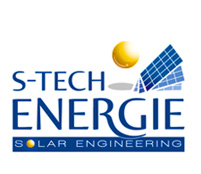Bavaria’s major photovoltaic specialist |
 |
|
|

FAQ Do you have questions? Sure! Below you will find answers to frequently asked questions. Should your query not be included, then please use our contact form or call us on +49 (8671) 88 63 20. How does a photovoltaic system work?
The photovoltaic system converts solar energy into electrical energy. For industrial use, solar panels are installed using a substructure directly onto the roof and which is electrically interconnected. Therefore, the direct current produced can be fed, while the power using a “commercial” inverter converts alternating current. Of course, we only install both certified and state-of-the-art modules. Therefore, we ensure optimal cost/use ratios.
How secure is the ideal location designed for a PV system?
Optimal use of radiation energy results from the installation of the panels to the south onto facing roofs with a slope of 30 °.
However, studies have shown that this may vary. This means that at least 88% of the maximum energy yield can be achieved, for example, for all roof orientations facing southeast and southwest and for roof pitches inclined at between 10 ° and 50 °.
How much energy is available?
The sun has been providing Earth with energy free of charge for 4 billion years. It is true that only about a small fraction of the total solar energy hits on the earth's surface. This is sufficient to allow life on earth for millions of years to come. In southern Germany, an average solar radiation of between 880 kWh and 1,100 kWh per square meter is expected this year. This corresponds to 7 kW of installed power for an average family household with about 7,000 kWh of energy radiation on the roof which faces the sun (which equals the energy of approximately 6,500 litres worth of heating oil!).
How is annual solar radiation distributed?
Productivity for the year, which is provided via a solar power system, may also have seasonal variations: Around 3/4 is produced in the summer months, and around 1/4 is produced in winter is terms of the total annual productivity.
Do I need a building permit?
PV systems are structural systems that form part of building regulations. Different rules apply within the individual federal states. In Bavaria, most systems do not require any approval. We will be happy to assist you with regard to clarifying this issue.
Is this also the case with the static model?
From experience, a rooftop system shows no increased static loads. For very flat roofs (e.g. industrial buildings, etc.) it is advisable however, that each case be calculated on the basis of professional work carried out by a structural engineer.
When does a system payback?
The general rule is: larger systems are cost-effective. Depending on the system, the payback period is from 6-12 years.
Must there be a feed into the national grid?
The energy generated by a photovoltaic system is initially fed into the home network. From here, the solar energy from electrical devices can be used within the home: this is then known as consumption or self-consumption. If more power is available to be consumed, then any excess flows into the national grid. If there is not enough solar power to meet the household’s individual consumption, then any required quantity is taken from the grid. As a result of this, the consumption can be billed with the utility provider, while a special arrangement will be required to install a utility meter. The electricity meter record on the one hand displays the level of energy, and on the other will also display the power supply and the reference number. The power consumption can be easily calculated by the energy input (consumption) subtracted from the energy generate (PV-counter). Payment of individual consumption with the utility provider is normally straightforward. It is often calculated based on the expected supply and consumption values on the basis of a credit note, on which any refunded amounts including for individual consumption have already been charged in full. Payments must be made to the utility provider on the basis of the credit note. At year-end, any counter values are taken into account and any adjustments will be carried forward.
How long does a system last for?
We use only systems which have been tested by us and which are therefore of the highest quality. The performance guarantee is generally in the range of up to 25 years. The solar cells used in this case have a considerably longer service life. For this reason, correct installation is important to ensure that no damage with respect to the support structure or the electrical wiring occurs to help provide the solar modules with as long-term use as possible. The oldest system in Rome has been running for over 50 years without any interruptions!
What type of operating and maintenance costs will I have?
These values vary depending on the size and design of the system. Our highly trained advisers can calculate any potential costs based on the individual situation in question.
What quality standards does my system comply with?
S-Tech Energie GmbH uses exclusively TÜV-certified solar modules from leading manufacturers. In addition to this, our modules have a CE mark and include the internationally recognised ISO 9001 certificate.
The careful selection of manufacturers and suppliers is consistent, and therefore guarantees a high quality standard for the long service life of all components.
Die sorgfältige Auswahl unserer Hersteller und Zulieferer wird laufend überprüft und garantiert somit durch einen hohen Qualitätsstandard die lange Lebensdauer aller Komponenten. Does a PV system cause electro smog?
Photovoltaic modules and DC power cables to the inverter produce specific DC fields. These are lower than natural fields after only a few centimetres of distance. Inverters and all other AC circuit devices generate alternating fields, but are harmless in size. AC power cables behind the inverter, and on the AC side, do not differ in terms of cables for the stove, the washing machine, or other major domestic electrical items. High-frequency alternating fields, the most dangerous, do not occur in a PV system. Anyone who is concerned about electromagnetic pollution caused by the impact of a PV system should first think about far more common, daily appliances. These include cordless phones, mobile phones, Wi-Fi routers, Bluetooth devices, baby monitors, microwave ovens, induction hobs, energy saving lamps, heated water beds, etc.
Do PV systems increase the risk of fire?
Yes, but this is true for many live appliances as well. When fire-fighters attack from the outside, a minimum distance of a few metres protects the fire-fighters from electric shocks, however this safety distance is not provided via roof systems. The greatest risk for fire fighters when attacking fire from the inside when they enter the premises, comes from burnt cables of the PV system caused by water or the when they come into contact with power surges. In order to reduce this risk, the industry is working on emergency switches which separate the modules inside the roof near the DC line and which lead down over safety relays. Thus far, no fire-fighters have been injured in combating fires caused by PV electricity in Germany. A case report went to press, which had confused solar thermal collectors and PV modules. No appropriate PV system had been installed on the home in question. "Through a period of comprehensive training within the fire service, any initial uncertainties have been quashed. As with any electrical installation, you can safely deter these fires with water from one to five meters distance depending on the spray even when using photovoltaic systems. All allegations made led the fire service to believe that had a burning house did not suffer damage because of photovoltaics, and that any previous research was not proven to be substantiated. Compliance with the existing rules by qualified professionals provides the best protection against fire. 0.006 percent of the photovoltaic systems have caused a major fire. In the last 20 years there have been 350 fires in which the solar system was involved, but in only 120 of these, it helped to cause the fire. In 75 cases, the damage was great, and in 10 cases, the building burned down completely. Photovoltaic systems do not present a greater risk of fire when compared to other types of appliance. There are sufficient existing rules for electrical safety - is important that these be respected. Fires often arise when inexperienced personnel are involved in the installation process. If the solar connector attaches the items using pliers rather than with special tools or are compatible connector is not used, then a level of vulnerability becomes inevitable. Don’t try to save money in the wrong places!
How do I get a free consultation?
We can offer you a free, no obligation consultation with one of our knowledgeable members of staff in your local area, any time. Use our contact form or call us on +49 (8671) 88 63 20.
We look forward to meeting you! |